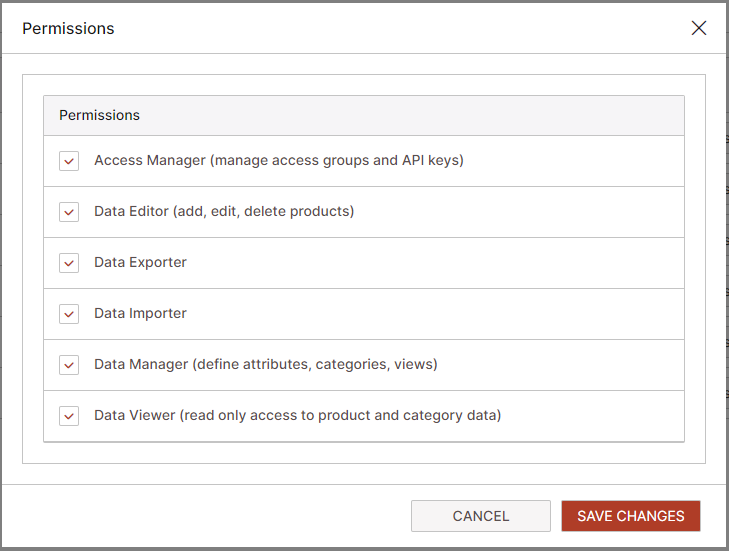User Roles in PIM
Managing a Product Information Management System (PIM) like PIMInto, user access and permissions are crucial elements to ensure data integrity and security. In this system, users belong to or can be assigned to a specific "Access Group". These access groups serve as a mechanism to manage and control what users can see and do within the PIM based on their roles and responsibilities.
Initially, the owner of the PIM needs to create an access group that has "Access Manager Role" permissions. This foundational step is crucial because the Access Manager Role is the gateway to creating and managing other access groups and API keys. This initial access group is imbued with the highest level of privileges, allowing it to oversee the creation, alteration, and removal of other access groups, and control the distribution of API keys. Hence, at least one access group with the Access Manager Role is required to operate the PIM effectively and securely.
Once the initial access group with the Access Manager Role has been set up, additional access groups can be created with varying roles and permissions. These roles could include product managers who need extensive access to product data, sales teams who need read-only access to certain product information, or IT teams who require access to API keys and technical configurations.
By creating specific access groups and assigning roles, you can maintain a high level of data security and integrity in the PIM. This strategy ensures that every user or team only has access to the data and tools they need, reducing the risk of accidental data changes or breaches. Furthermore, it allows for greater control and oversight of who is able to make significant changes within the system.
This efficient and organized approach to user management is essential in a PIM. It enables businesses to tailor their system to their specific needs and structure, making sure that everyone involved in the product information life cycle has appropriate and secure access.

Different roles can be assigned to access groups, enabling efficient collaboration and data management. The following is a list of roles can be assigned within a PIM system and their corresponding responsibilities.
Access Manager:
-
Responsible for assigning permissions or roles to access groups through user interface and API.
-
Invites users to join the PIM and manages users and assigns users to access groups through user interface.
-
Access Manager role cannot have Views assigned. Access Manager automatically have access to all defined Views.
Data Manager:
-
Responsible for ensuring consistency and organization of product data.
-
Data Manager role cannot have Views assigned. Data Managers automatically have access to all defined Views.
Data Editor:
-
Cannot define Attributes, Categories, and Views within the PIM system.
-
Can be assigned one or more Views.
Data Viewer:
-
Given read-only access to Product and Category data through user interface and API.
-
Can view product details, descriptions, and Attributes.
-
Can be assigned one or more Views.
Data Exporter:
-
Given read-only access to product and category data.
-
Authorized to export data from the PIM system in different formats using bulk export functions for external use.
-
Can be assigned one or more Views.
Data Importer:
-
Responsible for importing new or updated data into the PIM system.
-
Uploads data files from various sources (e.g., suppliers, manufacturers).
-
Can be assigned one or more Views.
Assigning specific roles to access groups within a Product Information Management (PIM) system is essential for effective collaboration and streamlined data management. Each role carries distinct responsibilities that contribute to maintaining accurate, organized, and up-to-date product information. By leveraging these roles, businesses can ensure data integrity, improve operational efficiency, and deliver exceptional customer experiences.
